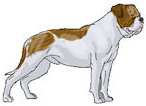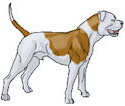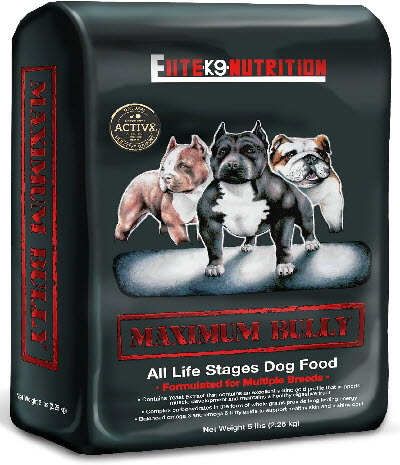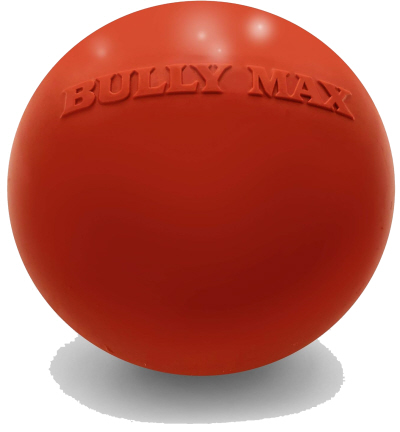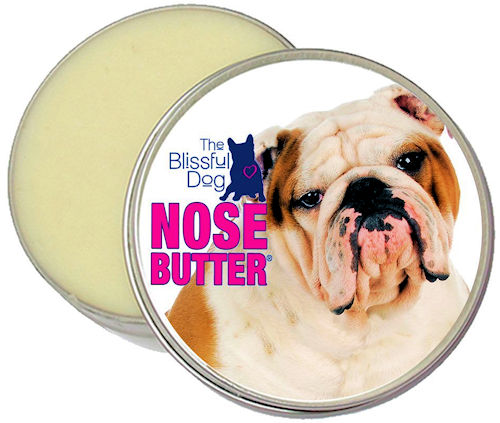Common
Questions
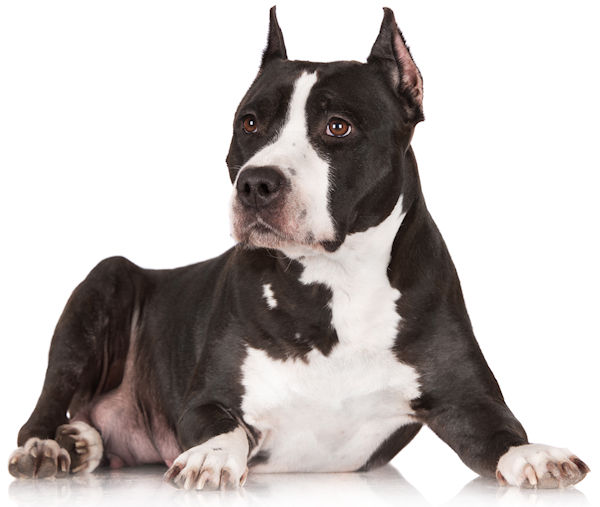 Belonging
to the "bulldog" and "Bull & Terrier"
groups of pure-bred dogs. They are often mis-identified,
mis-labbeled, or delibrately called "pit bulls".
Belonging
to the "bulldog" and "Bull & Terrier"
groups of pure-bred dogs. They are often mis-identified,
mis-labbeled, or delibrately called "pit bulls".
Many owners of such dogs face prejudice and may be the
target of physical and even verbal attacks and campaigns
on social media.
Breed Specific Legislation is a way for governments
and local authorities to generalize and demonize entire
breeds despite the fact that a small percentage of the
bully breeds are a danger to society.
Often any dangerous behaviour can be traced back to
deliberate formation and training by owners. Below is
an example of some of the "bully breeds" and
it shows the physical differences in the branches of
the genetic tree.
Some breeds have been ommitted as they are extremely
rare or do not face the same stigma of being labelled
as a dangerous dog or mislabbeled as a pitbull.
We
all know and love the fact that bulldogs are a stocky
breed, with a compact body that has a very low center
of gravity and short, sturdy and strong limbs.
The unique and unmistakable shape of the “breed” results
in a peculiarly unique and well-known gait that is sometimes
imitated when referring to weight lifters because they
swagger like cocky tough guys! But that tough looking
exterior as we all know is covering a real heart of
gold!
Bulldogs and are known for their short muzzles with
somewhat saggy skin on their faces, creating what looks
like a “frown” which has become almost the trademarked
look of the breed.
Bully mixes will often show slightly softer characteristics
of the bulldog especially when mixed with larger and
thinner breeds in which case we often see the skull
and eyes revealing the biggest clues that the puppy
is actually a mix.
The
traditional bulldogs come in a variety of colors and
ideally will have a short and smooth lustrous coat.
Beyond
the bully mixes, which can come in a more varied size
and shape the weight of what we consider the traditional
bulldog is between 40 and 55 pounds (18 to 25 kilograms)
when fully mature.
While
it’s true that what some dog owners call “pit bulls”
(i.e. American Pit Bull Terriers, American Staffordshire
Terriers, and Staffordshire Bull Terriers) can trace
their genetic lineage back to the original breed of
bulldog. Bulldogs were historically crossed with terriers
to create what is known as the “pit bull” breeds (“pit
bull” is not actually it’s own certified breed; rather,
it is a inclusive term which is used to collectively
describe the American Pit Bull Terriers, American Staffordshire
Terriers, and Staffordshire Bull Terriers). After decades
of selective breeding, however, all of the dogs that
originated with bulldogs, all the “pit bulls” included,
now have a unique set of traits and characteristics
that are standard to that breed.
Pit
Bulls (capitalized, that term actually refers to the
American Pit Bull Terrier) are a recognized breed, with
their own special traits and characteristics. So are
American Bulldogs. Therefore, the most accurate description
of many of these wonderful dogs would be American Pit
Bull Terrier/American Bulldog mix.
Be cautious if people are just referring to such dogs
as a “pit bull”; it really isn’t accurate. Dog owners
sometimes refer to such dogs (a Staffordshire Bull Terrier/American
Bulldog mix for example) just as a “bully breed” or
“bully mix”.
It’s simple and more accurate. But if you really want
to be an ambassador for the animal and to really educate
people, you could always say the full and accurate breed
name of your dog when asked, although smiling and saying
that she’s a “bully mix” will likely be less complicated!
How long will a bulldog live?
Of course, keeping your dog healthy and happy by showering
her with love and regular exercise will help them live
to a ripe old age. With all the devotion and affection
we receive from our bulldogs, all owners would like
their bullies to live forever (or at least a very long
time) but in most cases, the average life span of a
Bulldog is between 8 to 10 years.
Of course, some bulldogs that have made it to 12 years
old and there are some rare cases where a bull has survived
for 15, 16, 17, and even an 18-year-old.
The common health issues we discussed earlier tend to
affect older dogs so such exceptions to the average
life span are rare; the average life span is 10 years.
Providing a wholesome diet, plenty of exercise, regular
vet visits, and comfortable living conditions will defiantly
help increase this time and allow you to enjoy your
dog for many years. As with any pet it is best to fully
understand the responsibilities involved in owning a
pet, regardless of what sort of animal or breed it is
as it goes beyond the infatuation period and requires
a real lifetime commitment.
Why do bully mix and bull dogs seem
to cost so much?
They
don't really! A bully mix is less expensive than a more
pure bulldog...this is why we love the bully mix! They
are inexpensive yet offer many of the wonderful traits
of the bull breed. If you are considering buying a bulldog
and if the first question that skips across your mind
is regarding the price then maybe this is not the breed
that you should be looking at.
In fact, when considering buying any pet you can visit
the local SPCA or animal shelter but the business of
choosing a new dog should never be a factor of cost.
Buying a dog is not like finding a deal on a laptop
computer or a set of winter tires; no, any dog that
is to be cared for and loved for two decades should
be a dog that strikes a chord deep within us! In order
to breed a high quality bulldogs it is not cheap and
certainly a bully mix is not something you want to pick
up at some roadside puppy mill!
 Search Search
Bully
Mix Breed Dog Info
by Google® |
|
|
|
There is a great deal of time, effort and expense involved
in raising a proper and healthy Bulldog litter.
Without
going into detail, it can cost up to $3000 to breed,
deliver and raise a single litter, which is mainly for
resources and takes little consideration for the time
invested in raising the new litter. As with any dog
you have to deal with a reputable breeder as there are
many folks hoping to make a quick dollar by setting
up some cages in the backyard and forging a few pure
bred papers on the printer; if you are serious about
the adoption of a bully mix then first visit the local
animal shelter. A natural bulldog litter size is 4 puppies.
Part of the cost of raising the dogs for selling is
the expense involved in getting the females ready for
breeding which requires pre-breeding testing, ovulation
testing, which entail a minimum of approximately three
visits to the vet. The female will usually be artificially
inseminated which mean at least another 3 trips to the
vet, not to mention the expenses for the semen/stud
service which is in the area of $500 if it is a reputable
and certified service. Then the breeder must wait 30
days for an ultrasound or x-rays or a combination of
the two because it is important to be sure the female
is really pregnant! You'd be surprised!
Breeding bulldogs also involves special diets for the
mother and a constant monitoring for the next 5 weeks
of pregnancy, plus getting the nursery set up with with
heating pads, bottles, blankets, medical supplies, milk
replacer, puppy scales, and other accessories for a
proper incubation and nesting as the list of required
products to buy in order to give proper early care goes
on and on.
Then,
as in most birthing situations comes the C-section which,
depending on the veterinary services offered in your
area can cost upwards of $500 assuming the mama went
into labor during regular office hours and all went
well, which is often not the case! Females can typically
produce only 2 or 3 litters during a lifetime.
Bull dogs and mixes are a special breed which require
the help of caring and patient humans to bring a litter
to 8 weeks of age. In spite of their strong initial
appearance the Bulldog, as a newborn puppy, is rather
fragile and the newborn puppies require constant monitoring.
Bulldogs actually don't make the best mothers because
they may lay on a puppy by accident and not even realize
they are harming the little thing which is why surveillance
is important during the birth and why a knowledge of
the canine disposition is essential. The wee puppies,
when properly cared for, will be checked by the vet
at least 4 times during their first two months.
These visits to the local vet include the worming and
puppy shots that are mandatory. This is a breed that
requires maximum effort on the part of the breeder to
make sure that all the puppies turn out to be healthy
and this whole procedure is extremely costly. If you
are looking to buy a bulldog you will find that most
breeders range their pet bullys around the price of
up to$1800 mark.
Be wary of the "great deals" and "cheap puppies" that
you see for sale in newspapers as such poorly bred puppies,
if they come from nonprofessional puppy mills may cost
you a lot more in the end - not just in terms of money,
but also the heartache of owning a dog that has health
problems. As with anything we will often get what we
pay for and a living creature like a dog it only makes
sense to pay for a quality upbringing!
Do Bulldogs Get along With Cats &
Other Pets?
Yes! We've seen everything from German Shepherds to
Daschunds cuddle up with another dog or a wee kitten
and the bulldog and bully mix is no exception to the
rule. Of course, common sense has to be used if you
are planning on introducing a puppy into a home that
already has a dog, or any other living creature, in
residence.
This applies to even your friends and any strangers
that may enter your home...dogs, especially the bulldog
are very loyal and somewhat territorial so care should
be taken when contemplating such visitations or combinations.
The bulldog, not being aggressive breed by nature, love
to make friends with other animals more so than with
new people but they can take to your new boyfriend with
a little coaxing and a few doggy treats!
Introducing
a new member of your family or bringing a new pet, whether
cat or dog, may be harder on the pet you already have,
so patience is the key to making it work. Let any new
pets get to know one another only under your strict
supervision. Once the bond has been made things will
go smoothly but don't expect two or more unacquainted
animals to suddenly fall in love...it happens to people
but such infatuation is rare between dogs or among different
species.
Take
it slow and it will work but always take such introductions
slow and with you in control much the same as you've
seen with Caesar and the Dog Whisperer!
Bully Breeds & Children
Bulldogs and pit bull mixes absolutely love kids! Ask
almost any dog owner who has a properly raised bull
mix terrier or other combination and they all agree
that they are very patient and tolerant with children,
they are very gentle and loving. That being said, no
child should ever be left unsupervised with any dog,
no matter what sort of dog, because children often do
not understand the proper way of handling a young puppy
and could hurt the fragile newborn or even cause pain
to an older pup.
How many times have we seen editions of The Planets
Funniest Animals and seen some hapless puppy or kitten
being dragged literally by the whiskers or the tail
as some young, well-meaning child, drags the poor animal
into a baby carriage to push around the living room!
In situations like this even the most patient dog may
bite the young hand that doesn't know any better!
Do Bulldogs Make Good Watchdogs?
Not really. If you are looking for a watchdog then a
bulldog or a bully mix will not necessarily attack someone
entering your home. You see, because of their temperament,
Bulldogs simply will not act like a typically trained
attack dog. They may bark, and make no mistake they
will protect their family if they feel they are in danger,
but they should not be considered as a formal watchdog.
As was discussed earlier the aggressive traits have
been gradually bred out of this breed and there are
other dogs more suitable for being a watchdog. That
being said, a bull dog mix will behave like most dogs
and bark at any disturbance and due to their loyalty
may be a good choice for a family pet that also provides
the minor protection needed to make a family feel comfortable.
Is A Bully Right For Active People?
Like almost all dog breeds the bullies will be great
companions for active people and love to encourage their
families to move and get outside!
Of course; and if you are active then involve your bulldog
in your activities; just leave the dog at home if you
are going running. The bulldog is not considered a very
active breed and an adult cannot take long periods of
exercise. Because of the way your dog is built, being
so stocky and low to the ground often with short little
legs makes running, except for very short spurts, not
something that the Bulldog is built for or will enjoy.
He will be much happier watching an hour of Animal Planet
on the TV curled up on your sofa beside you when you
return home from your jogging routine. But they simply
love going to the park or to the beach or anywhere else
that requires only moderate exercise. They love going
for rides in the car or truck but as with all pets never
leave the dog unattended even for short periods of time
in a car.
 Search Search
Bully
Mix Breed Dog Info
by Google® |
|
|
|
They
shouldn't be fat! More like pleasantly plump. As is
the case with any dog, regular moderate exercise and
a well-balanced diet will control the weight problems
in Bulldogs.
Keep in mind they are very "solid" dogs who are designed
very wide and not very tall. So sometimes when they
look like what may be considered fat, they are just
stocky. (Like any dog, you should be able to feel the
ribs fairly easily, but not able to see the ribs sticking
out).
An excess of weight puts undue strain on the heart and
joints of the dog. The official breed standard for the
bulldog says: "The general appearance should suggest
great stability, vigor, and strength".
What kind of toys should you give
your bulldog?
Try...Bulldog Toys! :)
All young puppies will want to chew on most anything
and they don't know the difference between a ball of
string and a pair of leather gloves so purchase safe
chew toys for your puppy and train them early that these
toys are what they are allowed to chew on. Dog toys
need to be almost indestructible so buy the dog toy
that has a lifetime warranty from a reputable manufacturer.
Don't buy your puppy any toy she could swallow as it
may get lodged or stuck in her throat. Nylon chew toys
are quite safe and are available at all pet stores.
Chew toys will also help in your Bully's dental hygiene
as well but do not give your bulldog puppy rawhide sticks
or other unusual or bone products like pig ears and
pig hooves because these are not safe chew toys.
House Training
If you want the housebreaking to go quickly and want
to effectively follow the expert advice on house training
a bulldog then regardless of the method you use you
need to spend as much time as possible with your puppy.
Probably the most important rule to remember when house
training your dog is: If you don't catch your puppy
doing it then don't punish him for it!
You have to praise your puppy when things go right so
you need to ensure that the only time you interact is
when your puppy has done something bad and you sternly
scold her with a loud "no" .
If they do something right, let them know and as we
stated earlier the house training of your puppy should
begin with a good, constant feeding and watering routine;
establish set times for eating from the beginning and
feedings should be scheduled whenever someone will be
home take or have your puppy go to the right spot for
a bathroom break. Most puppies like to eliminate within
20 minutes after a meal and your house training will
be very successful if you can take the puppy outside
at these times right after the meal as this puts the
focus on this chapter of house training on teaching
your puppy where to go to the bathroom.
With such encouragement, your puppy will soon learn
that where to go is outside and not in your favorite
pair of slippers!
Inside
the home, in the day to day schedule of a family's daily
life supervision and confinement are the most important
tools in successful house training. Keep him in the
room with you, using a leash if necessary when she is
younger to prevent her from wondering off; eventually
the leash won't be necessary as the dog will learn not
to go wandering.
If you start to notice a restlessness or the start of
whining bring the dog outside. If you cannot supervise
your puppy during these times then confinement may be
required. Try using protective child gates or the dog
crate but don't confine the puppy so often that it feels
isolated.
A
bulldog puppy is a sociable creature and needs to be
with people or other pets. When you take your dog outside,
you need to let her know what she is supposed to do.
Repetition is important in dog training and taking them
to the same place through the same door with the same
leash is a good way to build positive habits. Use a
key phrase to encourage him so when she actually begins
to eliminate, shower the dog with praise and once she
has eliminated, it is a good time to play as the process
of reward, praise and encouragement will go a long way
if you take the time to continue doing it.
Always make sure you make the dog understand that you
are the boss; the leader of the pack!
The
Crate & Potty Training
What some people call "Crate Training" is one of the
most important things we need to do if we want to follow
the rules for potty training. The first thing is to
make your puppy's crate a place that she likes and never
use the crate as a form of punishment.
A good idea is to give a puppy treat when you first
put the puppy in the crate; you can put their favorite
blanket or towel along with their preferred toy in the
crate. Putting a sheet or a thick quilt over the crate
and leaving just the door side open up will allow the
puppy to see out, and you to see in; this makes it almost
like a cave which is actually a natural environment
for a dog and this cave will make them feel more secure
and they will enjoy the homey atmosphere!
If you continuously repeat these steps she will get
the idea that the potty and the place to take a poo
is outside. Always make sure to really "praise" the
animal after she does her business, whether it is a
number one or a number two and reinforces the behavior
with rewards and treats.
A puppy really doesn't quite understand all this until
he is two or three months old and sometimes even older
but it is your job, and it will work, if you are consistent
as this consistency of rewards and praise makes the
puppy understand what inside and outside is for. It
requires keeping one eye open all the time but eventually
the dog will catch on. As I said before, never use your
crate as a form or in connection with punishment!
If
you have a backyard that you can close off with a fence
and arrange it so the dogs' crate has access to the
fenced in kennel area and can still get back to the
crate for naps and security sessions. Make sure you
buy the right size dog cage which is one that has the
floor space that provides just enough for the puppy
to lay down.
The cage will be useful throughout a dog's life so choose
a model that comes with or has a divider panel as an
accessory so you can adjust the space inside the cage
and the one cage will accommodate your dog as she grows.
Using too large of a crate can often cause some unwanted
and long term problems because often, if the cage is
too spacious, the puppy will go poo and pee in one corner
of the cage and the dog will start tracking the urination
and defecation all around the cage and on her blankie
and...ewwww!
The bulldog instincts about not soiling its bed or laying
in the mess will be forgotten if this occurs in the
too-large cage, and the puppy will soon be doing it
regularly when placed in the crate and the housebreaking
method has turned into a behavioral problem as the bulldog
hygienic habits become its way of life.
Do Bulldogs Snore?
Yes the bulldog will snore. And it can be quite a loud
little sleeper to boot! Because of their short breathing
passages Bulldogs do have the tendency to snore. This
trait is not unusual for the short nosed dog breeds
and it is something the dog lover who is considering
owning a bulldog should be aware of. Because of the
skeletal structure and skull shape of the bulldog head
they can snore extremely loudly!

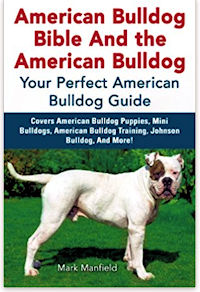
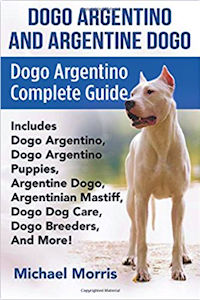
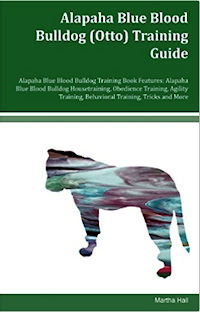

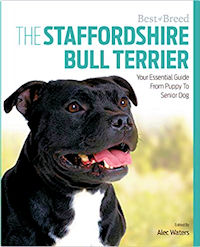

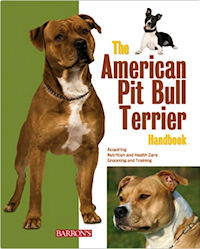
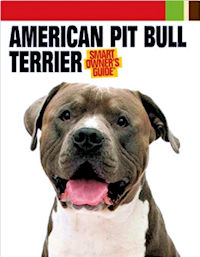
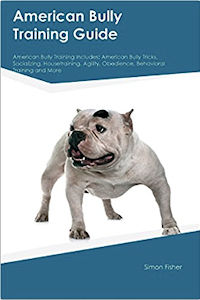
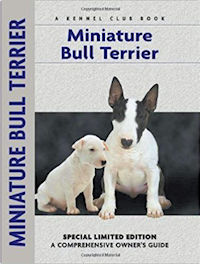
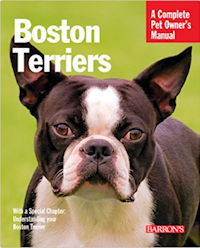
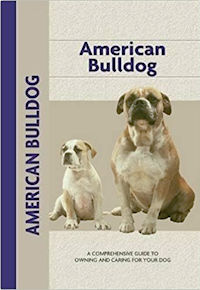
 Belonging
to the "bulldog" and "Bull & Terrier"
groups of pure-bred dogs. They are often mis-identified,
mis-labbeled, or delibrately called "pit bulls".
Belonging
to the "bulldog" and "Bull & Terrier"
groups of pure-bred dogs. They are often mis-identified,
mis-labbeled, or delibrately called "pit bulls".
 Search
Search
